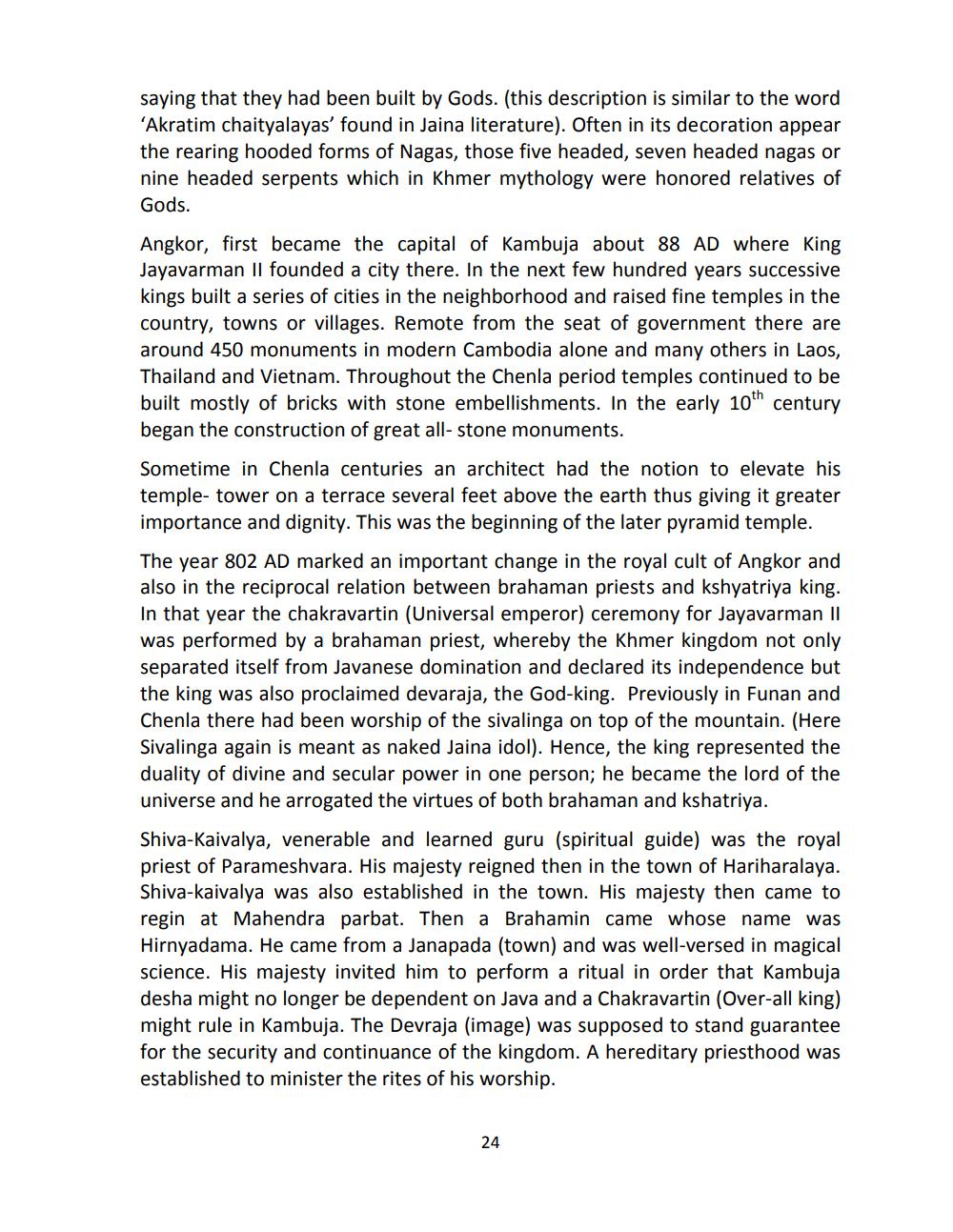________________
saying that they had been built by Gods. (this description is similar to the word 'Akratim chaityalayas' found in Jaina literature). Often in its decoration appear the rearing hooded forms of Nagas, those five headed, seven headed nagas or nine headed serpents which in Khmer mythology were honored relatives of Gods.
Angkor, first became the capital of Kambuja about 88 AD where King Jayavarman II founded a city there. In the next few hundred years successive kings built a series of cities in the neighborhood and raised fine temples in the country, towns or villages. Remote from the seat of government there are around 450 monuments in modern Cambodia alone and many others in Laos, Thailand and Vietnam. Throughout the Chenla period temples continued to be built mostly of bricks with stone embellishments. In the early 10th century began the construction of great all- stone monuments. Sometime in Chenla centuries an architect had the notion to elevate his temple-tower on a terrace several feet above the earth thus giving it greater importance and dignity. This was the beginning of the later pyramid temple. The year 802 AD marked an important change in the royal cult of Angkor and also in the reciprocal relation between brahaman priests and kshyatriya king. In that year the chakravartin (Universal emperor) ceremony for Jayavarman II was performed by a brahaman priest, whereby the Khmer kingdom not only separated itself from Javanese domination and declared its independence but the king was also proclaimed devaraja, the God-king. Previously in Funan and Chenla there had been worship of the sivalinga on top of the mountain. (Here Sivalinga again is meant as naked Jaina idol). Hence, the king represented the duality of divine and secular power in one person; he became the lord of the universe and he arrogated the virtues of both brahaman and kshatriya. Shiva-Kaivalya, venerable and learned guru (spiritual guide) was the royal priest of Parameshvara. His majesty reigned then in the town of Hariharalaya. Shiva-kaivalya was also established in the town. His majesty then came to regin at Mahendra parbat. Then a Brahamin came whose name was Hirnyadama. He came from a Janapada (town) and was well-versed in magical science. His majesty invited him to perform a ritual in order that Kambuja desha might no longer be dependent on Java and a Chakravartin (Over-all king) might rule in Kambuja. The Devraja (image) was supposed to stand guarantee for the security and continuance of the kingdom. A hereditary priesthood was established to minister the rites of his worship.
24




